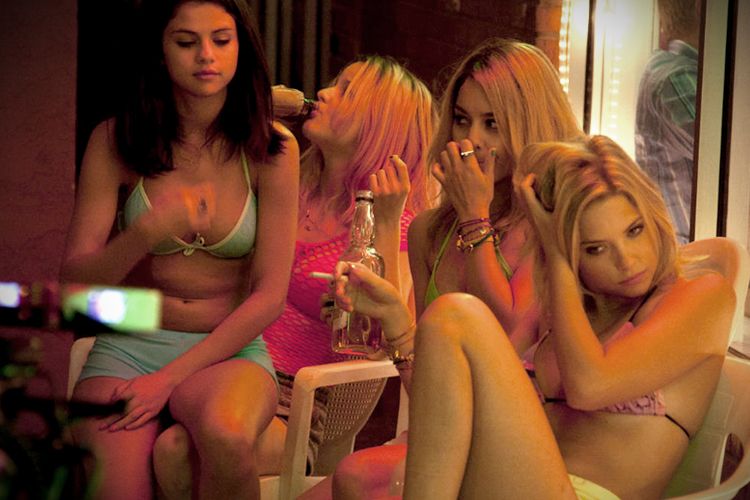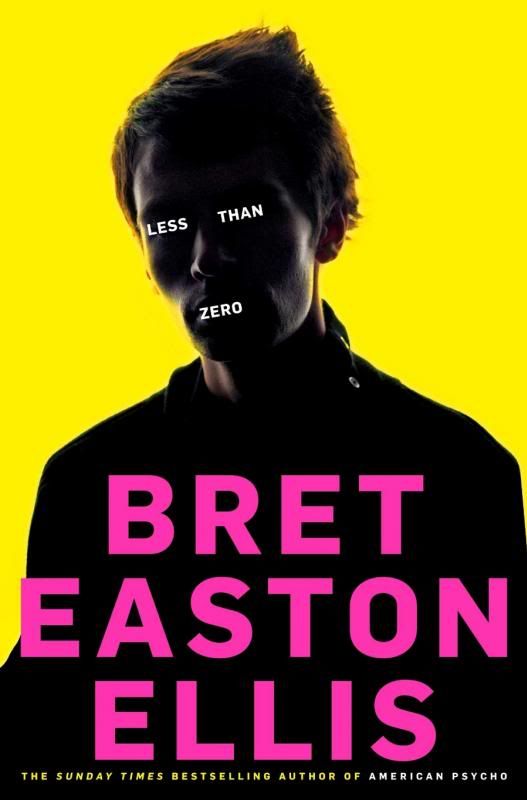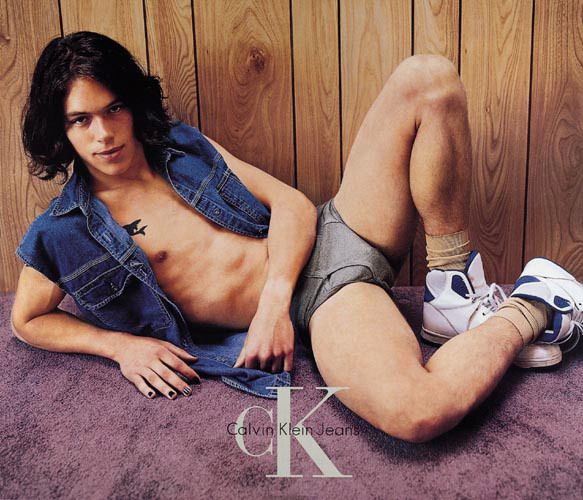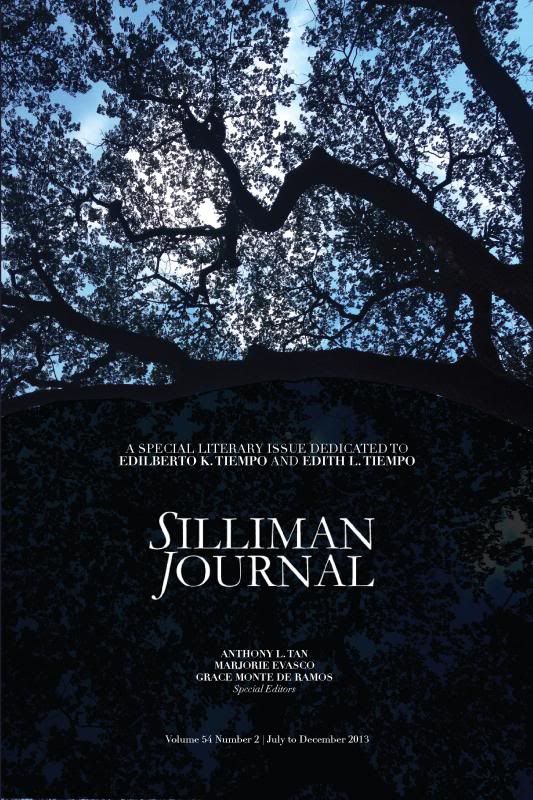Tuesday, October 29, 2013
 8:10 PM |
The Math in You
8:10 PM |
The Math in You
The Atlantic just published an article that declares "being bad at Math" to be a myth.
This is interesting because I grew up believing I was never a Math person. In grade school, I somehow refused to memorize the multiplication table, for example, because I kept finding myself asking things like, "Why is 2 x 2 = 4?" Always the
why.
So every time we'd get these competition quizzes in class, like pitting two classmates together in a two-lane race -- where every correct answer to flashcard mathematical problems gave you a chance to step forward where the teacher (and the finish line) was -- I'd lose. The winner got to sit down, and the loser had to go over the race once more. One time in Grade III, I lost to the ENTIRE class.
(But, whatever, I graduated valedictorian anyway,
ha.)
I was always bad in Math, except when they gave us those "window" exams, and for some reason, I'd always rate high. Not until junior high in Silliman University did I learn to love Math. I loved the intense concentration every exam demanded. I loved it, and all because of Prof. Alice Mamhot. She was a patient teacher. She knew the value of listening, and so she refused to have us write down notes while she was lecturing, always intoning to us a sentence in mock Spanish: "No puede calabang en grande de baha." And after we were done understanding everything she'd written on the board, she'd throw up her hands and say, "Copy break!" And then we'd write everything down. I learned to love Math with her. And during one periodical exam, I astounded everybody by getting a 99/100. I got a grade in the 90s that year.
So yes, we all have good Math in us. We just need good teachers.
Labels: education, life, mathematics, memories, teaching
[0] This is Where You Bite the Sandwich
Monday, October 28, 2013
 11:21 PM |
The Art of the Teenage Wasteland
11:21 PM |
The Art of the Teenage Wasteland
Maybe it’s because I’m reading Jon Savage’s groundbreaking exploration of the formation of the culture of adolescence in
Teenage. Or maybe because I just finished watching Sofia Coppola’s
The Bling Ring (2012). But sometimes, the art of Terry Richardson, Larry Clark, Harmony Korine, Brett Easton Ellis, and often Steven Meisel (especially in 1995) clumped together — distinctive for their almost salacious eye on teenage white-trashy abandon, which celebrates and condemns it at the same time — frankly scares me. Or at least unsettles me.





But maybe to unsettle is the point.
Or maybe I’m just getting old, hahaha.
Labels: advertising, books, criticism, film, life, photography, pop culture
[0] This is Where You Bite the Sandwich
 9:55 PM |
A Mountain of Dreams
9:55 PM |
A Mountain of Dreams
“It is easy, when you are young, to believe that what you desire is no less than what you deserve, to assume that if you want something badly enough, it is your God-given right to have it. When I decided to go to Alaska that April, like Chris McCandless, I was a raw youth who mistook passion for insight and acted according to an obscure, gap-ridden logic. I thought climbing the Devils Thumb would fix all that was wrong with my life. In the end, of course, it changed almost nothing. But I came to appreciate that mountains make poor receptacles for dreams.”
~
John Krakauer,
Into the WildLabels: books, life, quotes
[0] This is Where You Bite the Sandwich
 7:34 PM |
Questions and Interferences
7:34 PM |
Questions and Interferences
What’s often frustrating about Dumaguete is how—for a place that is supposedly steeped with a fine sense of culture and the arts—it lacks two basic things that would make this claim more truthful than usual: (1) it sorely lacks museums, and (2) there are barely any galleries.
Where is a museum that should be showcasing the best and the most original of Oriental Negrense culture and artistry, ran with professional curators who know how to do their jobs? Bacolod has one from what I’m told, which denies Dumagueteños any sort of excuse except a lack of imagination. From my readings of local history, there have been some attempts to found exactly this in Dumaguete, but there always seems to be a lack of political will, or the wherewithal to slay goliaths that usually spring from such enterprise. How I wish one of the elegant sugar mansions along the Boulevard have been converted to house exactly this collection—but even the mansions themselves are dissolving away into commercial plastic surgery in a city that has not yet learned to appreciate its cultural heritage.
One significant landmark in Dumaguete, for example, is old Silliman Hall. It is the first building in campus, designed by founder David Hibbard himself in the American colonial stick-style architecture. Silliman Hall and the old Bell Tower bookend the very definition of the Dumaguete landscape. But in 1972, there was a proposal for Silliman’s Hall demolition—in the name of progress, of course. (Why is it that “progress” is always evoked to justify the building of ugly new buildings?) But the plan was strongly opposed by one Commodore Jose Andrada. His vehemence was such that he gave a generous donation instead to restore the building’s tower room. The plan was ultimately scrapped, and thank God for that.
Can you imagine Dumaguete without Silliman Hall? I can’t. I don’t think anybody can. Its eventual restoration in the 1990s finally paved the way for many of us to think that an appreciation for heritage can in fact be fruitful in the long term. But think about how the loss almost happened. And look at how our Rizal Boulevard is changing, and how much of our cultural heritage is being erased—without any of us voicing out a hint of complaint.
What museums we do have are of the anthropological and the biological sort in Silliman University—important institutions, of course. But the lack of a city museum focusing on the arts is jarring. We have become a city that has become ridiculously unaware of our artistic heritage.
Nobody knows about Jose Las Piñas, for example—the prime portraitist from Dumaguete in the 1950s. Nobody knows about Francisco Verano. Nobody knows about the rich period in the life of National Artist for Painting Fernando Amorsolo when he used to frequent the city to chase its light and rustic beauty, which eventually informed many of the paintings he did here. (One Amorsolo now hangs in the Office of the President of Silliman.) Nobody knows about groundbreaking work by some of our contemporary artists, from Paul Pfeiffer to Karl Aguila, from Kitty Taniguchi to Amihan Jumalon, from Mariyah Taniguchi to Jana Jumalon, from Razceljan Salvarita to Kristoffer Ardeña, from Jutze Pamate to Mark Valenzuela, from Hersley-Ven Casero to Paul Benzi Florendo, and so on and so forth. Nobody knows what part Dumaguete art has contributed in the shaping of national art. And that’s sad.
There are barely any galleries either, only Mariyah Gallery off Bogo Junction and the one at Sidlakang Negros. The Cultural Affairs Committee at Silliman does put up several exhibitions at the Claire Isabel McGill Luce Auditorium Foyer Gallery, which sometimes spill over to the greatly unused exhibition space at Silliman Hall. Beyond these, there’s absolutely nothing.
Except for the restaurants.
For some reason, the restaurants are the ones taking up the slack. Perhaps in Dumaguete we admire our art alongside our food? Or perhaps, our culinary entrepreneurs just have a more refined sense of the visually artistic. The regular foot traffic that food brings makes the set-up ideal, too. When Jutze Pamate ran the now-defunct Jutz’s Café, it operated a gallery on its restaurant walls, and offered good art alongside its Tuscan pork chop and garlic fish fillet. Wing del Prado used to showcase artists she loved in a revolving exhibition at Gabby’s Bistro. Mike Butler—who owns an extensive collection of local art, which is housed at CocoGrande Hotel—used to make available the walls of Coco Amigos for local artists. Sanda Fuentes does the same thing in Lab-as, and Babbu Wenceslao in El Amigo. New to the ranks is Iris Armogenia, who has been active of late to use the walls of KRI to exhibitions of artist-friends.
The latest from KRI is
Interference, a small exhibition that gathers together four artists of uncommon brilliance: Elle Divine, Razceljan Salvarita, Jana Jumalon-Alano, and Rianne Dawn Salvarita. It’s interesting to note that they make up exactly the kind of artists who usually thrive in Dumaguete—the beautiful
langyaw, two coming from Bacolod, one from Australia, and another one from Zamboanga. Their disparate roots coupled with distinct visions inform an exhibition that varies in mediums and artistic expressions—and perhaps it is that variety that they truly celebrate. For them, after all,
Interference means “a surge of ecstatic creativity,” a “raw[ness] of infinite possibilities.”
“[It] is a radical frequency,” their collective statement continues. “Taken from a higher realm, it is a positive deviant. It triggers inclusion towards a diversified perspective that caters to a change from monotony… [It] projects a new vision of maturity in understanding the scope of sundry forms of art expressions in the borderless creative playground. It is a virtual ripple that touches the edge of the monotonic zone as it makes a subtle invitation to take bolder exploration in the spirit of creativity.”

In other words, at least in my reading of it, it is a collection by four artists who are breaking new grounds from the kind of art they have always been associated with. And that is evident enough. Rianne Salvarita, whom I have known to do representational art but pushing it into the eerie regions of the visceral, is here experimenting with a sort of cubism that runs away from the old embrace of abstract expressionism. Here, the geometric shapes have shadows; they have an undulating sense of physicality that courts his old representational mode. This is most apparent in “Iceberg,” which is a whitish-blue landscape that echoes its title, but fixed in that geometric rendition that makes it both solid and fluid.


Rianne’s brother, Razceljan Salvarita, on the other hand, has gone away from the mandalas and circles and fiery vulvas of his Bali phase—he had been a fixture in the Indonesian art scene for some time—to experiment in a kind of found art that isn’t. Because there’s still a painterly quality to his assemblage of wood and linen cloth and rope and what-not. Take a look at his “Tapestry in Symphony (in A Minor).” The pieces of repurposed wood he has gathered are wrapped in cloth and placed in a haphazard manner, approximating picket fences, on top of a painted board. The result is both rough and elegant—and together with his other works in the collection, they surprisingly resemble the spirit of abstract expressionism, like a Kandinsky with the flavor of eco-art.

The surprise for me in this exhibition is the revelation of Elle Divine as artist. One of the loveliest women I know, she takes my breath away with “Map of HerStory,” a study in red broad strokes and drippings that I would have described as a marriage of Pollock and Rothko—but with none of their masculine rages. Her painting pulsates with feminine power, her reds carefully textured out with painstakingly placed acrylic dots that give shape to the swallowing hue. All in all, her paintings come off as almost portraiture in nature—but not of the human face, but of the human aura.

Jana Jumalon-Alano, however, takes the biggest leap in her artistic evolution, and lands beautifully. I remember her paintings of pastel-colored nudes before, which imported a sense of feminist didacticism that I admired greatly but wasn’t particularly moved by. But what she does in “Wonder Years,” a portrait of two children peeking out of what seemed like broken wooden panels of a wall, to reveal their nondescript expressions, a gallery of family pictures behind them—is a wonderfully composed work that combines a sureness of craft, a tone of earthiness, and a narrative of the strikingly autobiographical, varnished with a singular warmth that pervades the painting’s affect. Her mixed media piece “Bira Cara Series” is of the same import.
Interference feels like an introduction to four great—but surely separate—exhibitions. Which is understandable, given the capacity of KRI as exhibition space. If only for this wonderful glimpse it offers, KRI is to be highly commended for taking up a cause Dumaguete City itself seems reluctant to.
Interference runs until 28 October 2013. KRI opens from 8 AM to 9 PM.Labels: art and culture, dumaguete, negros, painting
[0] This is Where You Bite the Sandwich
Friday, October 25, 2013
 7:02 PM |
I Already Know Her Name
7:02 PM |
I Already Know Her Name

I kept thinking, while watching Kimberly Peirce's remake of
Carrie (2013): "Where are the boobs? Where are the boobs?" Not because I'm an asshole, but because Brian de Palma perfectly mined the metaphorical relationship between a girl's newfound telekinetic powers with burgeoning female sexuality. There are no boobs in this new version. There is no bite, either, although the film mistakes visceral CGI for dreadful terror. I love the humanity of the new Tommy though; Ansel Elgort is a far cry from William Katt's Ken-doll marionette in the original, and I love that Peirce tries to check the flaws in the narrative logic of the original. But in the original, the malevolence sprang from Piper Laurie's Christian fundamentalist monster-mother -- but Julianne Moore telephones in the role of Margaret White instead, and it is a disappointment to discover that her greatest depravity is the ability to cut herself. But the greatest flaw in this movie is the casting of Chloe Moretz, whose mien suggests plucky rather than bullied-upon. Because of that physical unbelievability, Ms. Moretz hides behind physical acting instead, going about the school with her shoulders haunched to suggest vulnerability. Sissy Spacek never had to do that. You look at her, and she embodies frailty. You look at her again during the beginning of the prom scene, and she embodies girlish delight, the transformation to swan a magnificent surprise for us. You look at her again covered with pig's blood, and she is a fiery fiend whose stare curdles your blood. Moretz tries to do the same thing, and you think, "This girl is cosplaying."
Labels: film
[0] This is Where You Bite the Sandwich
Thursday, October 24, 2013
 1:34 PM |
So, Would This Guy Brighten Up Your Life?
1:34 PM |
So, Would This Guy Brighten Up Your Life?

Say hello to Andrew McCarthy from John Hughes's
Pretty in Pink (1986). He keeps breaking into grins in this movie.
Labels: film, memories
[0] This is Where You Bite the Sandwich
Monday, October 21, 2013
 10:27 PM |
Life Quake (Expanded Version)
10:27 PM |
Life Quake (Expanded Version)

I finally went home last Tuesday, October 15, at around 7:30 AM, after having grappled with writing an article about Siquijor witches for
Smile Magazine and editing a friend’s short story for an anthology, all of Monday night till the early hours of Tuesday morning, at Qyosko. I have always been a night owl; I work best around the quiet dictates of the midnight candle. And I like how it is when I alone am wide-awake while the rest of the world becomes quiet in sleep. It makes me think of how fragile the world really is, and how beautiful it can be in that fragility. The night reminds me there is an end to all things, and what makes us human is our furious pursuit of loving something that will never last. As the poet J. Neil C. Garcia once said, “It is finitude that makes beauty possible. I guess the beloved is beautiful precisely because he cannot be possessed, or because he can easily be lost.”
And so I was tired that Tuesday morning, and I was more than ready to sleep till noon. That was the plan.
I was beginning to slumber away when the earthquake hit at 8:12 AM. I bolted out of bed, every instinct telling me this was no dream, and the shaking of the floors—a quick dizzying spell that lasted forever—was no nightmare. I could hear people shouting outside.
I live on the first floor of a bulky house, and I could easily imagine myself flattened by all the concrete above me. We have been educated well by the Hollywood School of Disasters—that cinematic language of adversity where we see our movie heroes come to grips with being trapped in a collapsed building, or faced with the yawning knowledge of mortality as natural disasters vent their rage. I did not want to become like one of those movie heroes.
Every human instinct gets boiled down to one imperative:
live.
Getting up, I saw my MacAir by my bedside. For a split second, my heart weighed the consequence of saving possession—but I found there was quiet pride and surprising dignity in instantly letting go of materials things when I found myself thinking: “F*ck the laptop.”
I wanted to live.
I grabbed my keys, rushed to my padlocked gate—only to find the whole thing jammed as the earth quaked some more, and I remember thinking as my fingers fumbled with panicked key and stubborn lock: “Why do I have to die this way, dressed only in my shirt and blue underpants, trapped by this steel gate, with a full view of sky and street?” It seemed comedic, almost—but the quaking did not allow me to laugh.
I wanted to live.
I jimmied away at the lock, turning it this way and that way, until it finally did give way. But by then, the earthquake—which did not seem to wane—was over.
How do you describe the dizziness that comes after an earthquake? And I don’t just mean the physical kind, as your inner sense of balance grapples with the unexpected rattling to your system. Your body, you realize, is perfectly attuned to the earth where it comes from. Your skin senses now the slightest shake. Or perhaps, you tell yourself, those are just your nerves talking. There are aftershocks, yes, but you get to realize your mind creates their own aftershocks as your body settles down to the knowledge it has survived a potential disaster.
My senses were alert—but ultimately my body demanded sleep. Still, it took a while to go back to a slumbering state. It was easier though with the knowledge that my gate was now fully opened, unlocked. Never mind the potential thieves. There was only potential earthquakes still to come to deal with.
The aftershocks rocked. And I did not wake up at 12 noon as planned. My body woke up to the dimness of late afternoon, knowing I have slept away the entire day—and perhaps for the better. For how to deal with a day that had began with dizzying fear? The bed proved to be a comfortable companion. Later on, I would learn the day had darkened with rain clouds, and then it had rained hard. Later on, I would learn from my feed in Facebook and Twitter that people had talked of a possible Apocalypse.
If I weren’t hungry, I wouldn’t have gone outside after waking, but I needed dinner. I had already missed out on lunch. And food was what I needed as a kind of confirmation of life after the news of destruction somewhere else. The death toll was rising by the hour. And my heart bled for Bohol. I scroll down my social network feed, and see the damage of the old churches in Loon, in Loboc, in Dauis, in Baclyaon. All that history and beauty gone in an instant.
When I went downtown, the lights were off—a blackout, I was told. Later, safe in the bright lights of a café, life went on as I booted up the same MacAir I had readily abandoned to the welcome feed of the wifi. There was food before me, there were people I knew around me as well.
And all the while I thought of how life could be so random, so fragile, like the night. I thought of how things could meet their end in an instant even after centuries of having braved everything else.
I thought of how important it finally was to start living in the now. These are not life lessons from an earthquake, just an underscoring of what we already know but often forget.
Labels: life
[0] This is Where You Bite the Sandwich
Sunday, October 20, 2013
 2:38 AM |
A Special Literary Issue of the Silliman Journal
2:38 AM |
A Special Literary Issue of the Silliman Journal
 The special literary issue of the Silliman Journal launches on December 6!
The special literary issue of the Silliman Journal launches on December 6! This special issue of the Silliman Journal -- edited by
Anthony L. Tan,
Marjorie Evasco, and
Grace Monte de Ramos -- honors the legacy of two giants in Philippine letters: S.E.A. Write Awardee Edilberto K. Tiempo, in honor of his birth centenary in 2013, and National Artist for Literature Edith L. Tiempo, in honor of her second death anniversary.
The issue includes a preface by Rowena Tiempo-Torrevillas, with contributions by Anne Carly Abad, Gémino S. Abad, Ceres Y.C. Abanil, Merlie Alunan, Adlai Amor, Ronn Andrew Angeles, César Ruìz Aquino, Corin Arenas, Cirilo F. Bautista, Randy Bustamante, Erin Cabanawan, F. Jordan Carnice, Ian Rosales Casocot, Albert Casuga, Thomas David F. Chavez, Elsa Martinez-Coscolluela, Jhoanna Lynne B. Cruz, Vida Cruz, Alice Sun-Cua, Zaldy Dandan, N. Adrian de Pedro, Ricardo M. de Ungria, V.I.S. de Veyra, Simeon M. Dumdum Jr., Felix Fojas, Armand Gloriosa, Michael Aaron Gomez, Asterio Enrico N. Gutierrez, Antonio Hernandez, Cristina Pantoja Hidalgo, Susan S. Lara, Francis B. Macansantos, Priscilla Supnet-Macansantos, Lorna Peña-Reyes Makil, Hansel B. Mapayo, Peter Zaragoza Mayshle, Timothy R. Montes, Homer Novicio, Corinna Arcellana Nuqui, Carla Pacis, Allan Pastrana, Myrna Peña-Reyes, Victor Peñaranda, Mary Ann E. Pernia, Noel P. Pingoy, M. Protacio-De Guzman, Deedle Rodriguez-Tomlinson, Dinah Roma, Melissa Salva, Allen Samsuya, Nadine L. Sarreal, Trish Shishikura, Jojo G. Silvestre, Cherrie Sing, Joshua Lim So, Victor N. Sugbo, Brylle Tabora, Michelle T. Tan, Seann Tan-Mansukhani, Roberto Klemente Timonera, Joel M. Toledo, Tim Tomlinson, Denver Ejem Torres, Renz Christian Torres, John Jack Wigley, Januar Yap, Anna Yin, and Alfred A. Yuson. The photo art is by May Tobias-Papa.
Labels: dumaguete, silliman, silliman journal, writers
[0] This is Where You Bite the Sandwich
Tuesday, October 15, 2013
I went home today at around 7:30 AM, after having grappled with editing a story and writing an article all of last night till the early hours of the morning at Qyosko. I was tired, and I was more than ready to sleep till noon. That was the plan. I was beginning to slumber away when the earthquake hit at 8:12 AM. I bolted out of bed fast, every instinct telling me this was no dream, and the shaking of the floors -- a quick dizzying spell that lasted forever -- was no nightmare. I could hear people shouting outside. I live on the first floor of a bulky house, and I could imagine myself flattened away by all the concrete above me. Getting up, I saw my MacAir by my bedside, and I was actually quite proud of myself when I found myself thinking: "Fuck the laptop." I grabbed my keys, rushed to my gate -- only to find the whole thing jammed as the earth quaked some more, and I remember thinking: "Why do I have to die this way, dressed only in my underpants, trapped by a steel gate, with a full view of sky and street?" I jimmied away at the lock, until it finally gave way. By then, the earthquake was over. It took a while to go back to sleep, my gate fully opened, unlocked. The aftershocks rocked. I did not wake up at 12 noon. I woke up to the dimness of late afternoon, knowing I have slept away the entire day. If I weren't hungry, I wouldn't have gone outside. But I needed dinner. I needed a confirmation of life after the news of destruction somewhere else. My heart bled for Bohol. Downtown, the lights were off -- a blackout, I'm told. But here I am in a cafe with wifi, food before me, and all the while I am thinking of how life is so random, how things can end even after centuries of having braved everything else, and how important it is to start living in the now.
Labels: life
[1] This is Where You Bite the Sandwich
Thursday, October 10, 2013
 8:07 PM |
"Let Lips Do What Hands Do"
8:07 PM |
"Let Lips Do What Hands Do"
I couldn't sleep last night, again. Insomnia is a terrible thing, but it makes for a good prompt to do cinematic excursions. And so I decided, for reasons unknown to me, to make a tour of some of my favorite adaptations of William Shakespeare's
Romeo and Juliet, focusing on one of my favorite scenes, this one from Act I Scene 5, when our two young tragic lovers meet for the first time. I've always found the scene's playful use of hands and lips and kiss and sin terribly romantic, rich in playful metaphor. The original goes this way:
ROMEO [To JULIET.]
If I profane with my unworthiest hand
This holy shrine, the gentle sin is this:
My lips, two blushing pilgrims, ready stand
To smooth that rough touch with a tender kiss.
JULIET
Good pilgrim, you do wrong your hand too much,
Which mannerly devotion shows in this;
For saints have hands that pilgrims' hands do touch,
And palm to palm is holy palmers' kiss.
ROMEO
Have not saints lips, and holy palmers too?
JULIET
Ay, pilgrim, lips that they must use in prayer.
ROMEO
O, then, dear saint, let lips do what hands do;
They pray — grant thou, lest faith turn to despair.
JULIET
Saints do not move, though grant for prayers' sake.
ROMEO
Then move not, while my prayer's effect I take.
[Kisses her.]
Thus from my lips, by yours, my sin is purged.
JULIET
Then have my lips the sin that they have took.
ROMEO
Sin from thy lips? O trespass sweetly urged!
Give me my sin again.
I thought about it, and then asked myself: How did some of our filmmakers render this scene? Because it's a crucial scene, and when it's handled poorly, it will certainly come off trite and corny. Much depends on the tone set by the filmmaker and the chemistry between the actors. And so I ventured into the various renditions of this scene, from Franco Zeffireli's seminal
Romeo and Juliet (1969), to Baz Luhrmann's manic and music-laded
William Shakespeare's Romeo + Juliet (1996), and finally to Alan Brown's magically sweet gay version in
Private Romeo (2011).
So who's the best Romeo and who's the best Juliet of the three?
Labels: film, life, literature, love, queer, theater
[2] This is Where You Bite the Sandwich
Sunday, October 06, 2013
 5:55 PM |
Recalibration
5:55 PM |
Recalibration
 This is me. 5:45 PM, Sunday, 6 October 2013, The Bean Connection.
This is me. 5:45 PM, Sunday, 6 October 2013, The Bean Connection.
This rainy day has been an introspective sort. I have to admit I have been of a mildly depressive funk the past few months — ever since 22 December 2012, actually. Since that time, I’ve felt like I’ve already done all I could to make my life beautiful and fulfilling, and there was nothing else before me except heartbreaks and disappointments. I have no idea why I thought that way: but it has been the subtle negative force behind my feelings of utter helplessness since the beginning of this year. It’s a feeling that I have done nothing worthwhile since then, although good friends have quickly pointed out to me that I’ve done so much more than I have given myself credit for. Today, I’m done with giving myself short shrift. I thought about it, and I’m done wallowing. I love life, I love discovering things and making adventures. I love helping people. I love the feeling of endless possibilities.
I will learn to live again, and that starts now.Labels: life
[0] This is Where You Bite the Sandwich
Wednesday, October 02, 2013
 6:54 PM |
The Past Tense of This is Officially Me
6:54 PM |
The Past Tense of This is Officially Me

Labels: life
[0] This is Where You Bite the Sandwich
GO TO OLDER POSTS
GO TO NEWER POSTS

















 8:10 PM |
The Math in You
8:10 PM |
The Math in You
 11:21 PM |
The Art of the Teenage Wasteland
11:21 PM |
The Art of the Teenage Wasteland





 9:55 PM |
A Mountain of Dreams
9:55 PM |
A Mountain of Dreams
 7:34 PM |
Questions and Interferences
7:34 PM |
Questions and Interferences





 7:02 PM |
I Already Know Her Name
7:02 PM |
I Already Know Her Name

 1:34 PM |
So, Would This Guy Brighten Up Your Life?
1:34 PM |
So, Would This Guy Brighten Up Your Life?

 10:27 PM |
Life Quake (Expanded Version)
10:27 PM |
Life Quake (Expanded Version)

 2:38 AM |
A Special Literary Issue of the Silliman Journal
2:38 AM |
A Special Literary Issue of the Silliman Journal

 8:27 PM |
Life Quake
8:27 PM |
Life Quake
 8:07 PM |
"Let Lips Do What Hands Do"
8:07 PM |
"Let Lips Do What Hands Do"
 5:55 PM |
Recalibration
5:55 PM |
Recalibration

 6:54 PM |
The Past Tense of This is Officially Me
6:54 PM |
The Past Tense of This is Officially Me
